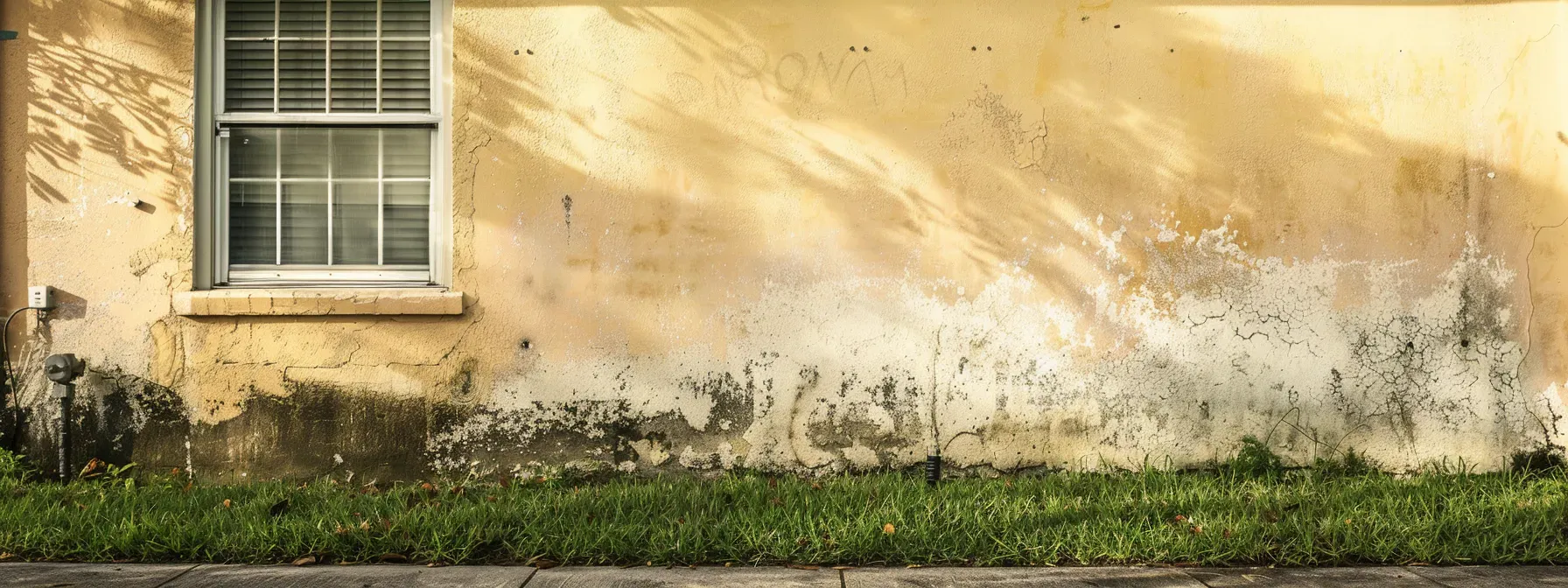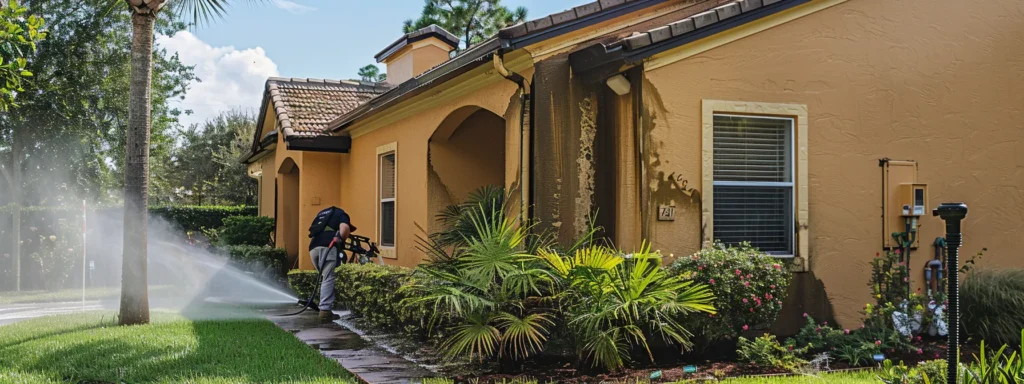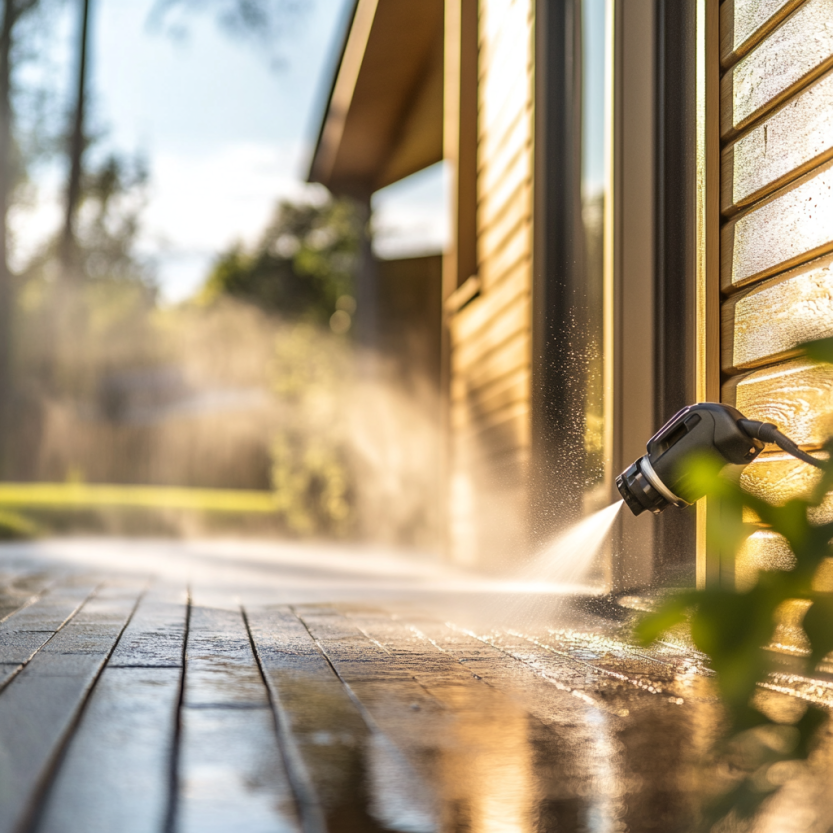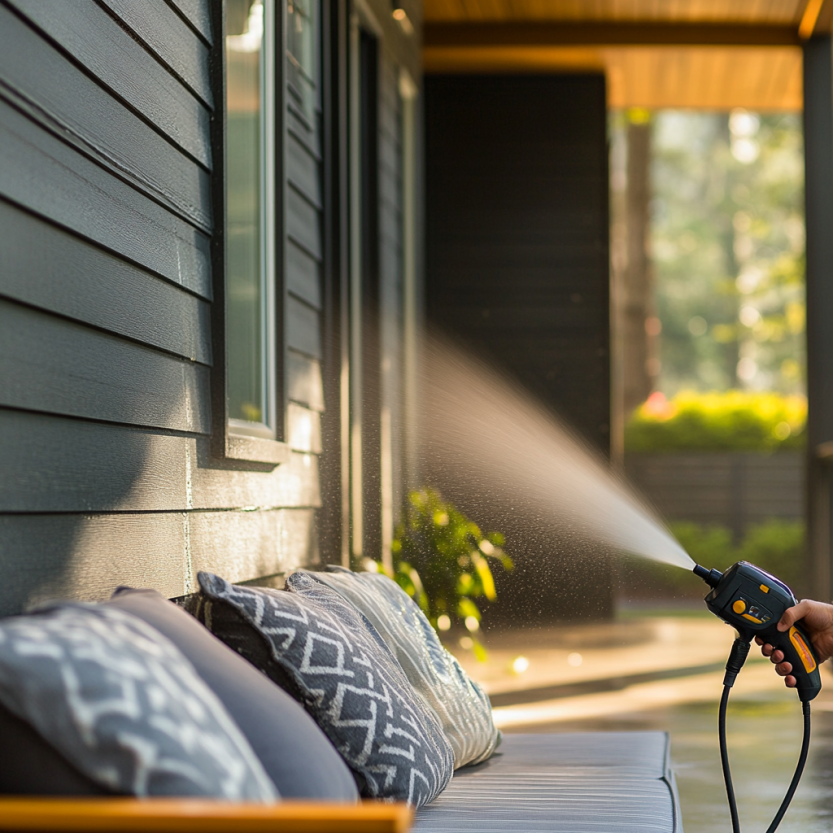GORILLA KLEEN NEWS & MORE
From the Gorilla’s Mouth

Steps to Adjust Pressure Washing for Fragile Surfaces
Are you struggling to clean delicate surfaces without causing damage? Adjusting pressure washing equipment is crucial to effectively maintain surfaces like wood, vinyl, and painted areas. In this article, I’ll guide you through selecting the right pressure washer, demonstrate techniques for safely adjusting pressure, and provide effective cleaning methods. By the end, you’ll be equipped to clean delicate areas confidently, avoiding costly damages and extending the life of your property. Let’s dive into safeguarding your investment while achieving spotless, professional results.
Key Takeaways
- Adjust pressure settings to protect delicate surfaces like wood and soft metals
- Use appropriate nozzle attachments to avoid damaging fragile materials during pressure washing
- Regular maintenance of pressure washers is necessary for effective cleaning of sensitive areas
- Conduct test sprays in inconspicuous areas to ensure pressure settings are safe
- Utilize eco-friendly cleaning solutions to protect your property and the environment
Understanding the Importance of Adjusting Pressure for Delicate Surfaces
Identifying delicate surfaces, such as roofs and steel structures, requires special care during pressure washing roofs. Many homeowners overlook these fragile areas, which can lead to costly mistakes. In this section, I will discuss common errors, the importance of proper pressure settings, and how they impact these sensitive materials. I’ll offer practical insights and a free quote to help you keep your property looking its best.
Identifying Delicate Surfaces That Require Special Care
Identifying delicate surfaces is key to effective pressure washing a home. Materials like wood and bicycle saddles are particularly susceptible to damage from high-pressure cleaning techniques. Additionally, while concrete driveways are more robust, they can still crack under excessive pressure, especially if they have been sealed or treated. Understanding these distinctions helps me ensure that the right cleaning methods are applied, protecting your investment while achieving the best possible results.
Common Mistakes When Pressure Washing Fragile Areas
One common mistake I often see when pressure washing fragile areas is using the wrong nozzle attachment. For instance, using a high-pressure nozzle on delicate surfaces, like soft tissue and stainless steel, can cause irreparable damage. An environmentally friendly approach, such as opting for a less aggressive nozzle, ensures that I can clean without harming the material, preserving its integrity for years to come:
| Surface Type | Recommended Nozzle | Common Mistake |
|---|---|---|
| Soft Tissue | Low-pressure nozzle | Using a high-pressure nozzle |
| Stainless Steel | Medium-pressure nozzle | Direct cleaning with high pressure |
| Wood | Fan spray nozzle | Concentrated stream cleaning |
The Impact of Incorrect Pressure Settings on Delicate Materials
Using incorrect pressure settings can lead to serious damage on delicate materials like siding or wood. For instance, if my pressure washer’s pump is set too high, I risk stripping paint or even causing warping on softer surfaces. By employing a pressure regulator and adjusting my equipment in conjunction with the right hose and nozzle, I can protect these fragile areas while still achieving a thorough clean.
Selecting the Right Pressure Washer for Delicate Work

When selecting a pressure washer for delicate work, I focus on key features to ensure effective cleaning without causing damage. I will discuss recommended models suited for sensitive surfaces, including how to appropriately assess pressure ratings for various applications. Understanding these aspects helps me tackle stains and dirt on roofs and saddle materials while maintaining their integrity.
Key Features to Look for in a Pressure Washer
When selecting a pressure washer for delicate tasks, I prioritize models that offer adjustable pressure settings. This feature is vital for safely tackling stains and mildew on sensitive surfaces like roofs and sidewalks without causing pain to the material integrity. Additionally, choosing a cleaner that comes with various nozzle attachments allows me to customize the application for different surfaces, ensuring that even delicate tissue-like materials receive the gentlest touch while still achieving an effective clean.
Recommended Pressure Washer Models for Sensitive Surfaces
When selecting pressure washer models for delicate surfaces, I recommend options that incorporate adjustable pressure settings to minimize the risk of damage. For instance, a washer with lower pressure capabilities is ideal for areas prone to mold, as it allows me to use appropriate detergents without overwhelming the material. Additionally, models designed for cycling through various nozzle attachments enable precise cleaning, ensuring that each surface, from wood to roofs, receives the right level of care while effectively removing dirt and contaminants.
Assessing Pressure Ratings for Different Applications
When assessing pressure ratings for different applications, it’s essential to consider the specific needs of each surface type. For example, when working on pavers, I ensure that the force calibrated is appropriate to prevent damaging the joints or causing the stones to shift. Utilizing the right wand and adjusting the pressure settings accordingly allows me to effectively clean without compromising the integrity of delicate materials.
Techniques for Safely Adjusting Pressure on Delicate Surfaces
When adjusting pressure for delicate surfaces, I focus on a few key techniques. First, I’ll walk you through a step-by-step guide to lowering pressure settings effectively. Next, I’ll cover how to utilize different nozzle types for varying levels of cleaning power. Finally, I’ll share testing techniques on unseen areas to ensure optimal safety and performance. These strategies are vital for protecting sensitive materials while achieving excellent results.
Step-by-Step Guide to Lowering Pressure Settings
To effectively lower pressure settings for delicate surfaces, begin by turning off the pressure washer and detaching the spray wand. Next, locate the pressure adjustment knob or dial; this is typically found near the pump or on the handle. Gradually turn the knob to decrease the pressure, ensuring it is set to a safe level suitable for sensitive materials like wood or siding. Once adjusted, reconnect the wand and perform a test spray on a less visible area to check the effectiveness of your new pressure setting before proceeding with the full cleaning:
| Step | Description |
|---|---|
| 1 | Turn off the pressure washer and detach the spray wand. |
| 2 | Locate the pressure adjustment knob near the pump or on the handle. |
| 3 | Gradually turn the knob to lower the pressure to a safe level. |
| 4 | Reconnect the wand and test spray on a less visible area. |
Utilizing Nozzle Types for Varying Levels of Cleaning
When I perform pressure washing on delicate surfaces, selecting the right nozzle type is crucial to achieving effective cleaning without causing damage. Different nozzles offer varying levels of cleaning power; for example, a low-pressure nozzle is ideal for softer surfaces like wood or vinyl, while a medium-pressure nozzle is suitable for more durable materials such as stainless steel. By understanding the specific needs of the surface I’m working on and choosing the appropriate nozzle, I can ensure a thorough clean that protects the integrity of your property.
Here’s a quick reference for the different nozzles and their applications:
| Nozzle Type | Pressure Level | Recommended Surface |
|---|---|---|
| Zero-degree | High Pressure | Concrete and hardest stains |
| 15-degree | Medium-High Pressure | Brick and masonry |
| 25-degree | Medium Pressure | Wood and vinyl siding |
| 40-degree | Low Pressure | Cars and delicate surfaces |
Testing Techniques on Unseen Areas
Before initiating pressure washing on delicate surfaces, I always perform a test in an inconspicuous area. This step is crucial in ensuring that the pressure settings and nozzle type are appropriate for the material, as untested pressure can lead to unexpected damage. For example, applying a light spray on a shaded or hidden spot allows me to assess the effectiveness without risking visible damage:
- Turn off the pressure washer and detach the wand.
- Adjust the pressure settings to a lower level.
- Select an appropriate nozzle for testing.
- Spray a less noticeable area to observe the cleaning results.
Effective Cleaning Methods for Various Delicate Surfaces
To maintain delicate surfaces effectively, I focus on several key methods. First, I’ll share maintenance tips for wooden surfaces, ensuring they remain in great condition. Next, I discuss best practices for cleaning soft metals, which require careful handling to avoid damage. Finally, I’ll cover strategies for pressure washing cushions and fabrics, allowing you to refresh these items without compromising their integrity.
Maintenance Tips for Wooden Surfaces
To maintain wooden surfaces effectively, I recommend regular cleaning with lower pressure settings to prevent damage. Using a soft-bristle brush can help remove dirt and mildew without compromising the wood‘s integrity, while a gentle rinse with an appropriate nozzle ensures a thorough clean. Properly sealing and treating your wooden surfaces after cleaning will also extend their lifespan and maintain their appearance:
- Regularly clean with a soft-bristle brush at low pressure.
- Use the right nozzle for gentle rinsing.
- Seal and treat wooden surfaces post-cleaning to preserve quality.
Best Practices for Cleaning Soft Metals
When it comes to cleaning soft metals, I always use a lower pressure setting to avoid scratches or dents. A gentle approach, combined with the right nozzle—typically a fan spray—ensures that I effectively remove grime without damaging the surface. It’s essential to regularly inspect the metal for oxidation or corrosion; treating these issues promptly can extend the lifespan of your metal surfaces while maintaining their shine and integrity.
Strategies for Pressure Washing Cushions and Fabrics
When pressure washing cushions and fabrics, I always start with a thorough inspection to identify any stains or areas that require special attention. Using an adjustable pressure washer, I opt for a low-pressure setting combined with a fan spray nozzle to avoid damaging the fabric while effectively removing dirt and grime. It’s essential to pre-treat any stubborn stains with a fabric-safe cleaner, allowing it to sit for a few minutes before applying the pressure washer for optimal results:
- Inspect cushions and fabrics for stains.
- Set the pressure washer to a low-pressure setting.
- Use a fan spray nozzle for even coverage.
- Pre-treat stubborn stains with a fabric-safe cleaner.
Additional Tools and Products to Consider
To ensure successful pressure washing of delicate surfaces, I recommend utilizing specialty nozzles that provide gentle cleaning without causing damage. Additionally, eco-friendly cleaning solutions can effectively tackle grime while being safe for your materials. Lastly, applying surface protectants after cleaning helps preserve integrity and extend the lifespan of your surfaces. Each of these elements plays a crucial role in achieving successful results.
Specialty Nozzles for Delicate Cleaning
When pressure washing delicate surfaces, using specialty nozzles is essential for achieving a clean without inflicting damage. For example, a low-pressure soap nozzle allows me to apply cleaning solutions gently on softer materials, ensuring they remain intact while still addressing tough grime. Utilizing the correct nozzle tailored for specific surfaces not only enhances the cleaning process but also protects your investment in your property:
- Low-pressure soap nozzle for soft materials
- Fan spray nozzle for even coverage
- Specialty nozzles for textured surfaces
Eco-Friendly Cleaning Solutions
When it comes to eco-friendly cleaning solutions, I prioritize biodegradable detergents that effectively break down grime without harming delicate surfaces. Products specifically formulated for pressure washing not only minimize environmental impact but also enhance the cleaning process, ensuring that your property’s integrity remains intact. I recommend using these safe cleaning agents in conjunction with low-pressure settings to maximize results while confidently protecting your investment.
| Eco-Friendly Solution | Application | Benefits |
|---|---|---|
| Biodegradable Detergent | Soft surfaces | Environmentally safe, effective cleaning |
| Plant-Based Cleaner | Wood and fabrics | Non-toxic and gentle |
| Enzymatic Cleaner | General surfaces | Breaks down tough stains naturally |
Surface Protectants Post-Cleaning
After pressure washing delicate surfaces, using surface protectants is essential to prolonging their lifespan and maintaining their appearance. I recommend applying a high-quality sealant or protectant specifically designed for the material you’re treating, whether it’s wood, metal, or fabric. This step not only adds a layer of protection against future dirt and grime but also enhances the overall aesthetic, ensuring your property continues to look its best.
Some key benefits of using surface protectants include:
- Prevention of stains and dirt accumulation.
- Enhanced resistance to weather conditions.
- Protection against fading and degradation.
Frequently Asked Questions About Pressure Washing Delicate Surfaces

Understanding how to adjust pressure settings for delicate surfaces is essential for effective cleaning. I will address the safest pressure settings, ways to identify excessive pressure, and surfaces that are unsuitable for pressure washing. Additionally, I’ll discuss the use of hot water on delicate materials and provide tips for maintaining your pressure washer for these specific tasks. This information will equip you with the knowledge to protect your property while ensuring a thorough clean.
What Is the Safest Pressure Setting for Delicate Surfaces?
When working with delicate surfaces, I recommend setting the pressure at around 1000 to 1500 PSI. This range strikes a balance between effective cleaning and safeguarding sensitive materials, such as wood and thin metals. By using lower pressure settings, I can thoroughly clean without risking damage to your property, ensuring it remains in optimal condition.
How Can I Tell if I’m Using Too Much Pressure?
To identify if I’m using too much pressure during cleaning, I look for signs of damage on the surface, such as chipping, splintering, or paint stripping. If the material begins to distort or shows water penetration, it’s a clear indication that the pressure is too high. Adjusting to lower settings and choosing the right nozzle type can help me maintain the integrity of delicate surfaces while ensuring effective cleaning:
- Signs of surface damage, like chipping or splintering
- Visible distortion of the material
- Water penetration indicates excessive pressure
Are There Any Surfaces That Should Never Be Pressure Washed?
There are certain surfaces that I strongly advise against pressure washing, as attempting to do so can cause significant damage. For instance, delicate materials such as unsealed wood, painted surfaces, and certain types of asphalt shingles can suffer from chipping, stripping, or warping when exposed to high-pressure washing techniques. If you are unsure about a specific surface, I recommend consulting with a professional to assess the risks and determine the best cleaning methods to safeguard your investment.
Can I Use Hot Water on Delicate Surfaces?
Using hot water on delicate surfaces is generally not recommended, as it can exacerbate the risk of damage. High temperatures can cause materials like wood to warp or metals to lose their finish. Instead, I advise using lukewarm water along with appropriate cleaning detergents to effectively remove grime without compromising the integrity of sensitive surfaces. This approach allows for a thorough clean while ensuring the longevity of your property’s materials.
How Do I Maintain My Pressure Washer for Delicate Tasks?
Maintaining my pressure washer for delicate tasks involves a few essential steps to ensure optimal performance and safety. First, I always check the nozzle for clogs, as even a small blockage can lead to excessive pressure that could damage sensitive surfaces. Additionally, I regularly inspect the hoses and connections for wear and tear, replacing any damaged components to prevent leaks and maintain consistent pressure control during cleaning.
Conclusion
Adjusting pressure washing techniques for delicate surfaces is crucial for preserving the integrity of your property. By using appropriate pressure settings and nozzle types, I can effectively clean without causing damage to materials such as wood, soft metals, and fabrics. Regularly assessing the needs of each surface type and utilizing eco-friendly cleaning solutions further enhances the process while safeguarding your investment. Ultimately, understanding and implementing these techniques allow homeowners to achieve spotless results while maintaining their property’s beauty and longevity.
Why Choose Us?
100% Satisfaction Guarantee
Hot water washing cleans and sanitizes
Professional and courteous
Accredited by the PWNA
Fully EPA compliant contain & recycle
Locally owned
Sarasota County Chamber of Commerce Member
Members of the PWNA (Pressure Washers of North America)
BBB Accredited Business
Fully licensed and insured
Local charitable involvement
100% contain & recycle wash water
Environmentally safe products
State of the art equipment
Lakewood Ranch Business Alliance
studied Business Administration at Vanderbilt University and received his BA there.
- Comprehensive Guide to Commercial Pressure Washing Pricing - May 24, 2025
- Mastering Roof Cleaning: Pressure Washing Techniques - April 24, 2025
- Steps to Adjust Pressure Washing for Fragile Surfaces - March 21, 2025







